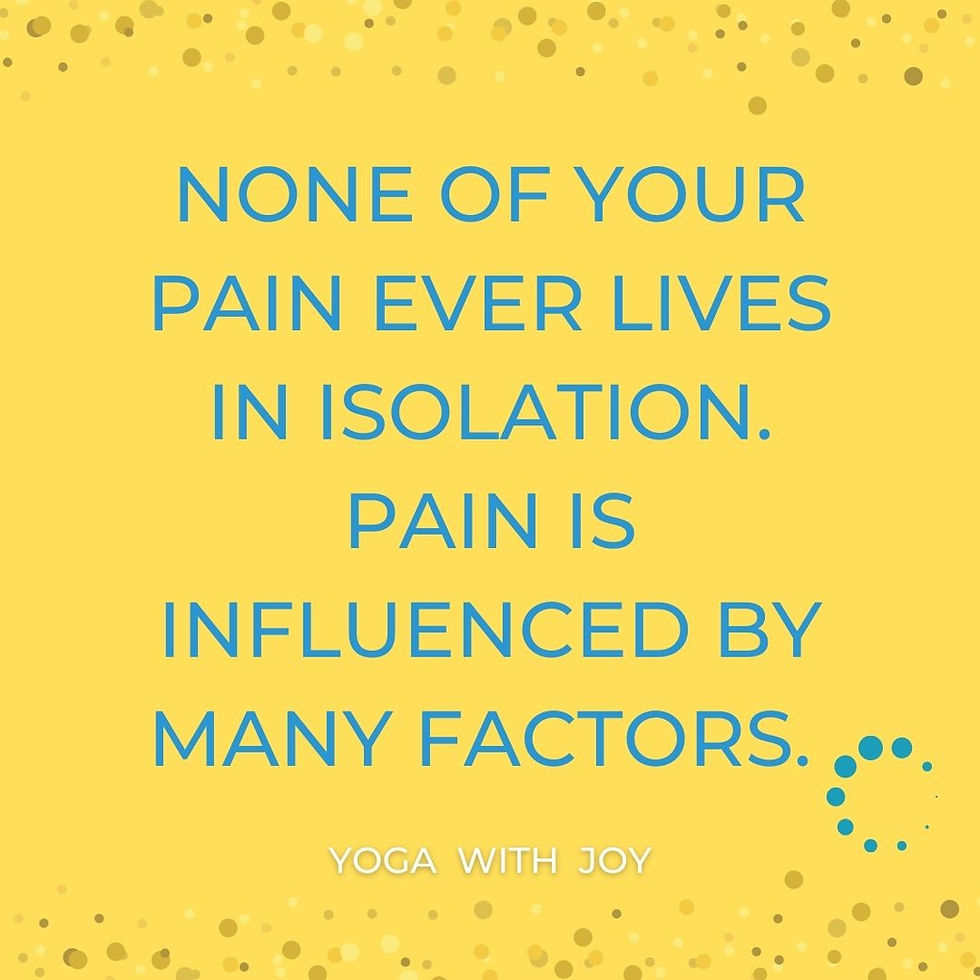Why Movement Hurts: Understanding Avoidance & Pain Responses
- Joy Zazzera

- Mar 15, 2021
- 2 min read
Updated: Aug 23
Why Movement Can Hurt More Than the Body
Connecting with movement becomes hard when the brain perceives a threat—even if the body is structurally sound. This phenomenon often appears in chronic pain or post-injury. It's not a failure; it’s a neuroprotective response aimed at avoiding further damage.

Kinesiophobia: The Fear of Movement
The term kinesiophobia describes the excessive, irrational fear of movement due to anticipated pain. Rather than resolve pain, this avoidance often maintains it—leading to reduced mobility, decreased strength, and prolonged recovery times.
Pain-Avoidance Patterns: More Than Just Pain
Fear isn’t the only driver of avoidance. The fear-avoidance model demonstrates how individuals can become trapped in cycles of pain perception and movement restriction—perceiving even neutral movement as dangerous.
Additionally, avoidance coping (from psychology) sheds light on how habitual evasion of discomfort—even internal sensations—can lead to long-term dysfunction.
How Yoga Therapeutics Supports Safe Movement
Gentle, trauma-informed yoga offers a pathway back to movement. Here’s how:
It recalibrates movement sensitivity, helping practitioners learn new, safer movement patterns.
It builds resilience through progressively safe exposure—reducing fear through practice.
Restorative sequences, mindful alignment, and varied movement options are the core tools to counteract movement avoidance with compassion and precision.

When Movement Avoidance Hurts the Most
In the short term, avoiding movement can protect—from aggravating an injury. But over time, as Harvard research shows, this strategy backfires, inviting stiffness, loss of strength, and deeper pain.
Understanding that pain is not always indicative of tissue damage—but often a brain warning system influenced by emotions, memories, or beliefs—can unlock powerful shifts in how we approach movement.
Building Trust Through Movement—Little by Little
Patience is key. Just like your nervous system needs cues to know that movement is safe, yoga therapeutics uses small, intentional moments—like gentle spinal waves or breath-connected movement—to slowly reestablish trust.
Takeaway
Avoiding movement is rarely a sign of weakness. It’s a protective voice. Yoga therapeutics meets that voice with curiosity, reassurance, and gradual exposure—helping your sense of movement to shift from threat to invitation.







Comments